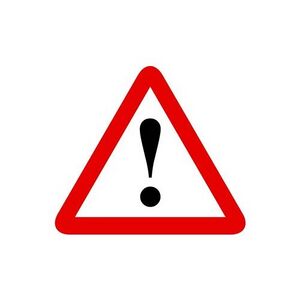Sleep angina

Sleep angina[edit | edit source]
Lacunar angina Spinal tonsillitis is an acute tonsillitis caused by the β-hemolytic streptococcus Streptococcus pyogenes. It produces Dick's erythrogenic toxin, the release of which into the bloodstream is responsible for the accompanying symptoms. Sore throat is manifested mainly by fever and sore throat. It typically occurs in smaller epidemics in children's groups (mostly aged 4-12 years).
Originator[edit | edit source]
Streptococcus pyogenes belongs to group A streptococci. The bacteria are G +, oval to round, immobile and non-sporulating. It produces an erythrogenic exotoxin that causes burns (acute tonsillitis accompanied by rash). M-protein and hyaluronic acid act as surface antigens of the capsule. They increase virulence and show immunologically cross-reactivity to cardiac myosin and sarcolemma.
Incubation time[edit | edit source]
2–4 days.
Clinical picture[edit | edit source]
Raspberry tongue
- Catarrhal to lacunar angina,
- raspberry tongue,
- erythema of the face with circumoral fading (Filat's symptom),
- swelling of the regional lymph nodes.
General symptoms: vomiting, abdominal pain, headache, sleep rash (mainly in the lower abdomen, chest and inner limbs - embolization predilection), small papules in the area of the nail beds and on the arches (Šrámek's symptom).
Diagnostics[edit | edit source]
Pharyngeal swab - culture certificate of streptococci. And determination of the level of antibodies against streptolysin O (ASLO), streptolysin S. Furthermore, against hyaluronidase, streptokinase and deoxyribonuclease (to evaluate the course of the disease, in the acute phase are not very important).
Complications[edit | edit source]
Rheumatic fever - with a latency of 10–20 days (Pancarditis, arthritis, erythema anulare, chorea minor). Acute post-streptococcal glomerulonephritis - hematuria 6–10 days after infection.
Therapy[edit | edit source]
The drug of choice is Penicillin V 100,000 IU / kg / d p.o. 10 days (difficulties should subside after 24-48 hours). In case of treatment failure or allergy to penicillin cephalosporins (5 days), amoxicillin with clavulanic acid, macrolides.
aminopenicillins should not be given if infectious mononucleosis is suspected.
Carrier Streptococcus pyogenes[edit | edit source]
The prevalence of Streptococcus pyogenes in the pediatric population is (depending on the area) 15 to 20%, lower in the adult population. Asymptomatic carriers are not at risk of developing supurative or non-supurative complications. At the same time, they are not considered an essential reservoir for the spread of streptococcal infection. Therefore, there is no need to identify or treat these asymptomatic carriers. Carrying out control cultures after therapy is not recommended (cost-benefit).
Links[edit | edit source]
Related articles[edit | edit source]
- Genus Streptococcus: Streptococcus pyogenes • Streptococcus agalactiae • Streptococcus pneumoniae • Streptococcus mutans • Oral streptococci Streptococcal infections: Group
- A streptococcal infections • Burns • Sore throat • Erysipelas • Impetigo • Infections caused by virulent streptococci • Complications and treatment of streptococcal infections • Rheumatic fever
- Angina ▪ Differential diagnosis of coating angina
Angina ▪ Differential diagnosis of coating angina
Reference[edit | edit source]
- ↑ Jump to: a b ROTTENBERG, Jan. Differential diagnosis, therapy and complications of acute tonsillitis [online]. In solen.cz. Spring and summer in the surgery and pharmacy. 1st edition. Olomouc: Solen, 2010. 138 pp. 48-57. Also available from <www.solen.cz>. ISBN 978-80-87327-32-6
- ↑ Jump up to: a b c d MUNTAU, Ania Carolina. Pediatrics. 4th edition. Prague: Grada, 2009. pp. 158-159. ISBN 978-80-247-2525-3.
- ↑ Bisno AL, Stevens DL. Streptococcus pyogenes. In Mandell, Bennett, & Dolin: Principles and Practice of Infectious Diseases, 6th ed. 2005: 2362–2390.
- ↑ Fisher RG, Boyce TG. Nose and Throat Syndromes. In Lippincott Williams & Wilkins: Moff and Pediatric Infectious Diseases: A Problem-Oriented Approach, 4th Edition 2005: 14–43.


